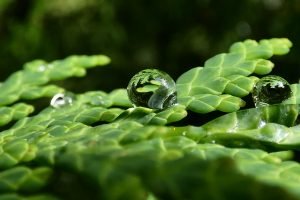Home / Visit / Plan Your Visit / Mackinac Island State Park Visitation Tips / Natural Wonders
The North Woods
Two major forest types cover much of Mackinac Island.


A mixed hardwood forest grows in the better drained soils of the island’s interior. Sugar maple, beech, red oak, hemlock and white pine dominate a forest containing a wide variety of plants and animals.
The soil layer supporting the island’s forest is often very thin. In some places the limestone bedrock is only inches below the surface. Competition for water and nutrients in this thin soil causes many trees to grow very slowly and die before reaching full size. The dead trees then decay and return important elements to the soil, which are used by the next generation of plants.
Rock Formations
Mackinac Island’s many limestone formations are an important part of the history and legends of the Straits of Mackinac.
These magnificent arches, stacks and sea caves are composed of limestone which was broken and recemented millions of years ago. Wave action of the ancient Great Lakes washed away the surrounding softer rock exposing these picturesque formations.
Arch Rock is the island’s most famous geological formation. The arch towers 146 feet above the water and spans fifty feet at its widest point. It is one of the natural wonders of the Midwest and still attracts sightseers as it has for a century and a half. It is visible from both the shore and the bluff.
Sugar Loaf is a dramatic breccia mass rising 75 feet above the ground and is the largest of Mackinac Island’s many limestone stacks.
Other interesting geological features include Robinson’s Folly, Skull Cave, Devil’s Kitchen, Eagle Point Cave, Crack-in-the-Island and Cave of the Woods.
Wildlife
Watch for gulls and ducks near the shore, warblers and finches throughout the island’s interior, and swallows and sparrows everywhere. During spring and fall migration, large numbers of hawks, waterfowl, and songbirds soar past the cliffs and move through the forests.
There are fewer species of land animals on the island than on the mainland. However, you can still spot squirrels, chipmunks, bats, and snowshoe hares. Less common residents include red fox, raccoons, gray squirrels, muskrats, and weasels. During the winter, white-tailed deer, coyote, and bobcat sometimes cross the ice from the mainland or nearby islands.
The deep clear waters of the straits contain over 25 species of fish, including the lake trout, lake whitefish, and yellow perch.